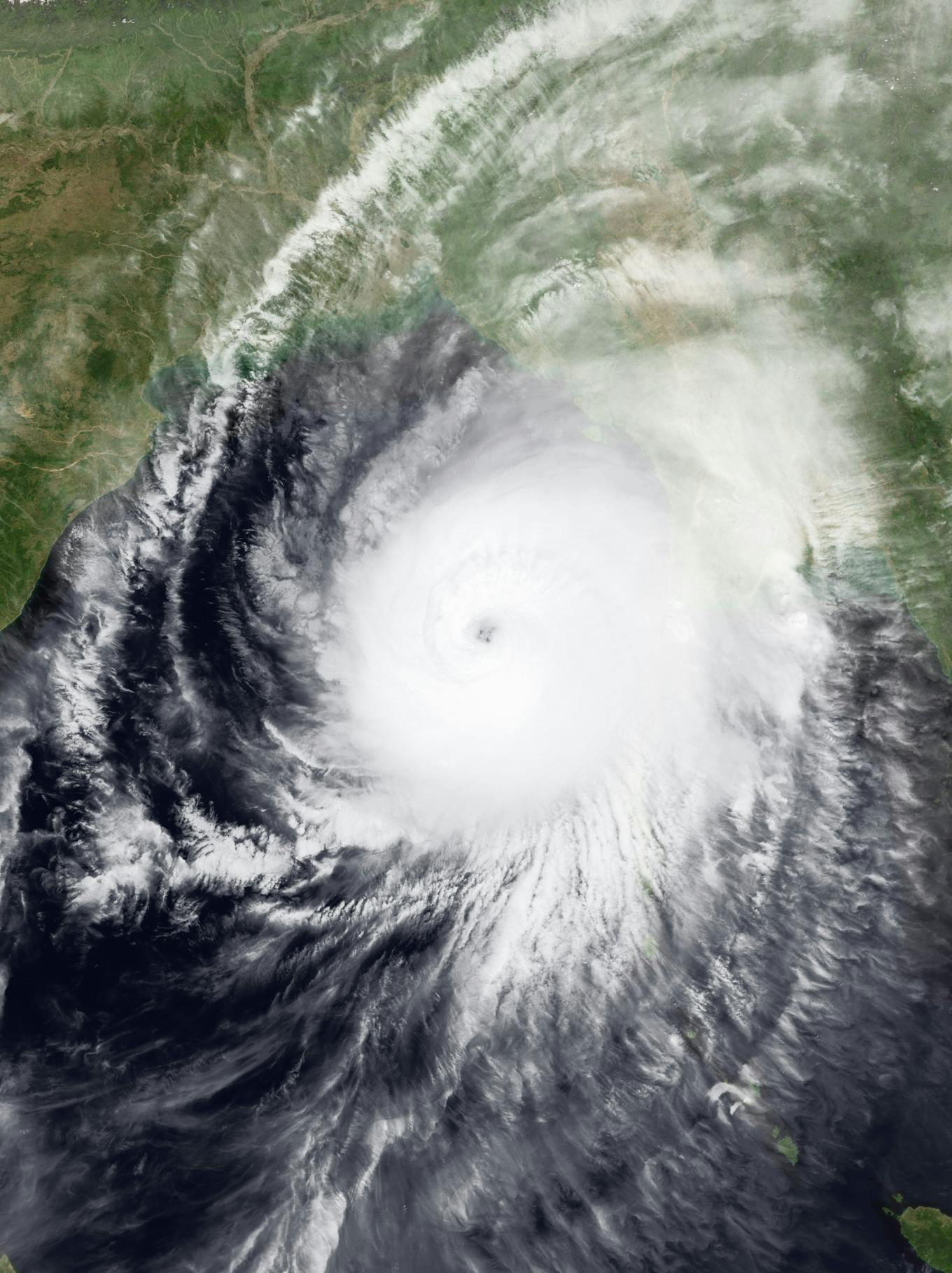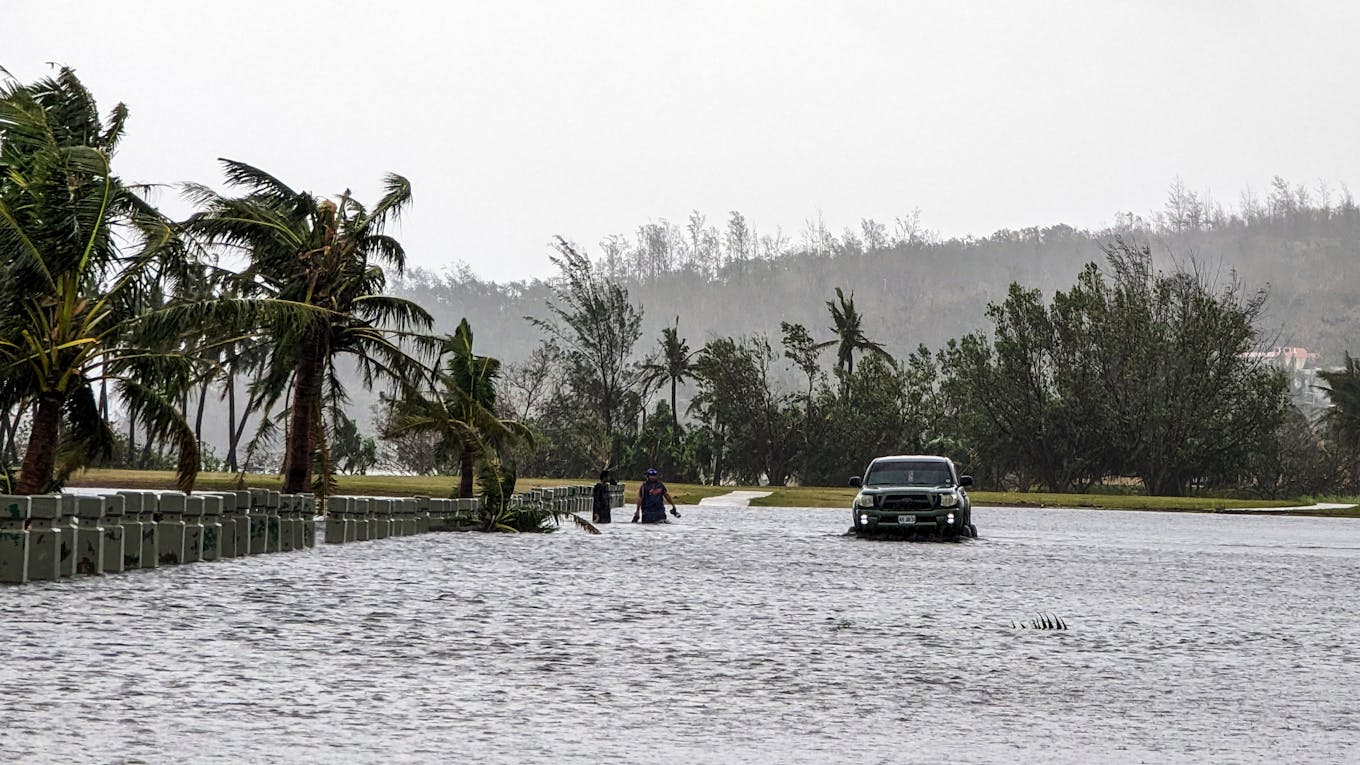It is official: 2023 will be the hottest year in recorded history.
The confirmation comes after an “extraordinary” November which smashed previous records, pushing the year’s global average temperature to 1.46 degrees Celsius above pre-industrial levels, according to Europe’s climate monitor Copernicus Climate Change Service.
Prior to the COP28 summit held in Dubai early this month, the United Nations had already declared 2023 the warmest year on record. Just based on the first 10 months of the year, global temperatures were around 1.4°C above the pre-industrial average, according to data from the World Meteorological Organisation.
This year, the return of El Niño conditions after three years of the cooling La Niña weather pattern has also sparked a chain reaction of extreme weather events, including bringing supercharged heat to cities across the world.
According to The World Weather Attribution group, an international coalition of climate scientists, the heatwaves experienced in South and Southeast Asia in 2023 was made 30 times more likely due to human-caused climate change.
Eco-Business tracks the impact of the heat waves on Asia and beyond, and looks back at the biggest extreme weather events of the year:
1. Record breaking heat scorches Asia
Beginning in April this year, countries across Asia was hit by brutal heatwaves, setting records as temperatures soared.
Many parts of Bangladesh, India, Thailand and Laos saw record high temperatures in April. Temperatures were as high as 45.4°C in the city of Tak, Thailand, for example. Casualties and hospitalisations due to heat stroke were reported in Maharashtra, India.
On 6 May, Vietnam recorded its highest temperature ever at 44.1°C in Thanh Hoa province, south of Hanoi. The heat wave forced Vietnamese authorities to turn off street lights and ration electricity to avoid overwhelming the power grid, especially as cities saw a surge in the demand for airconditioning.
With the arrival of summer in the Northern hemisphere, large swatches of China saw blistering temperatures that triggered public health warnings. Temperatures at Sanbao, a remote township in Xinjiang’s Turpan Depression reached a national record high of 52.2°C at one point. China’s capital Beijing suffered through 27 consecutive days of temperatures above 35°C, leading to a temperary ban on outdoor work.
Globally, 2023 saw the warmest June, July, August, October and November on record since scientists began keeping track in the mid-19th century.
2. Floods destroy neighbourhoods in Libya

Buildings destroyed by flooding in Libya. Image: Mchs.gov.ru , CC BY 4.0,
On 10 September, Storm Daniel swept across north-eastern Libya, bringing ferocious winds and massive rainfall that led to catastrophic floods that broke dams near the eastern city of Derna and wiped out entire neighbourhoods in the African country.
More than 4,300 people were killed by the storm. Significant damage was done to buildings, bridges, roads, electricity grids and other infrastructure, affecting thousands of families.
3. Heavy snow blankets Los Angeles
Los Angeles is synonymous with sunshine, but in February this year, areas around the city were covered in snow after a powerful winter storm descended upon southern California in the United States, bringing icy temperatures, fierce winds, heavy snowfall and causing rivers to swell dangerously. The Los Angeles Fire Department rescued four homeless people stranded in a major flood control basin of the Los Angeles River, and two of them were taken to hospital with hypothermia.
More than 120,000 California utility customers were without electricity due to the storm and multiday measurements saw an astounding 205 centimetres of snow recorded at the Mountain High resort in the northeast of Los Angeles. Snowfall was seen at elevations as low as 305 metres.
4. Cyclone Freddy devastates south-eastern Africa
After developing off the coast of Australia, Cyclone Freddy travelled more than 8,000 kilometres across the South Indian Ocean before making landfall in Madagascar in February. For over a month, the cyclone tore through Madagascar, Malawi, Mozambique and Zimbabwe, killing over 1000 people and leaving over half a million displaced. By damaging water and sanitation facilities, it also played a part in the worst outbreak of cholera in Malawi.
Cyclone Freddy holds both records for the most accumulated cyclone energy (ACE) – which is a measurement of a storm’s strength over its lifetime – and for the longest lasting tropical cyclone.
5. Severe sandstorms strike Beijing
On 22 March, the largest sandstorm of the year hit Beijing, China, engulfing the capital in sand and dust. Particles with density of PM10 – which are particles of pollution that are smaller than 10 micrometers in diameter and can travel to the lungs – reached a peak concentration of 1,667 micrograms per cubic metre according to the Beijing Municipal Ecological and Environmental Monitoring Centre. This far exceeds the daily average guideline of 45 micrograms per cubic metre set by the World Health Organization.
The sandstorm caused the city’s parks to suspend operations of cruise boats and cable cars, while people were urged to stay indoors. Beijing is often hit by sandstorms in the spring, and this has been worsened by industrial activity and rapid deforestation in northern China.
6. Cyclone Mocha ravages Myanmar

A satellite image of Cyclone Mocha near peak intensity on 13 May 2023. Image: NASA / Wikimedia Commons
Cyclone Mocha wreaked havoc in Myanmar in May, leaving a trail of destruction in its wake. The cyclone, characterised by 250-kilometre-per-hour winds, is the strongest cyclone in the Bay of Bengal in the last 10 years.
An estimated 5.4 million people were in the path of the cyclone across the state of Rakhine and north-western Myanmar, and the cyclone killed 145 people and inflicted severe damage to public infrastructure including hospitals, banks and religious buildings. Approximately 80 per cent of schools and educational infrastructure were damaged ahead of the new school term in Myanmar, affecting the education of many students.
7. Australia bakes in spring heatwave
In September, much of Australia’s southeast region, was hit by a spring heatwave. Temperatures in Sydney reached 34.2°C a staggering 12 degrees higher than the September average.
The Bureau of Meterology called the heat “very uncommon for September”.
Soaring temperatures caused 26 participants at the Sydney marathon to be taken to hospital and another 40 runners treated for heat exhaustion.
8. Typhoon Mawar pummels the Philippines, Japan, Guam and Taiwan

Typhoon Mawar made landfall on Guam on 24th May, causing island-wide destruction. Image: U.S. FEMA photo by Robert Barker / Wikimedia Commons
In May, Typhoon Mawar hit Guam and the Philippines, then lashed Taiwan and southern Japan. The Category 5 Super Typhoon, with winds of up to 180 miles per hour (289 kilometres per hour) is the strongest storm in 2023.
Guam was flooded and most of the island’s residents were left without power and electricity for weeks. The government of Guam estimated the commercial sector of the US territory suffered $112 million of damage.
In the Philippines, thousands of people in the coastal areas were evacuated, while schools closed and flights were cancelled.
Greenpeace Phillipines campaigner Jefferson Chua said: “The Philippines is in a constant state of emergency. Super Typhoons are the Philippines’ new normal, even as we are already experiencing longer-term, slow onset impacts such as drought, sea level rise, and diminishing resources.”
9. Europe and US swelter under extreme heat
Europe experienced some of its hottest temperatures in July, bringing with it heat advisories, raging wildfires and massive evacuations.
The Italian island of Sardinia saw temperatures push to 47°C and the Palermo airport in Sicily had to close after being encircled by wildfire.
Wildfires also caused more than 20,000 people to flee the Greek island of Rhodes. It was the largest wildfire evacuation in Greece.
The heat extended to the oceans, with sea temperatures rising to unsafe levels around Greece, Spain, Turkey and Italy.
In America, temperatures in California’s Death Valley reached 53.3°C, coming close to breaking the global record. The US National Weather Service issued a warning of a “widespread and oppressive” heatwave in the southern and western states. More than 80 million people were affected.
10. Record heat brings deadly wildfires to Chile
Record summer temperatures soared to more than 40°C in Chile in February, sparking wildfires in the South American country that killed 24 people and burnt 270,000 hectares of land. A state of emergency was declared in three regions in the country.
Chile’s interior minister Carolina Toha said: “The thermometer has reached points that we have never known until now. The evolution of climate change shows us again and again that this has a centrality and a capacity to cause an impact that we have to internalise much more.”
This story is part of our Year in Review series.





















